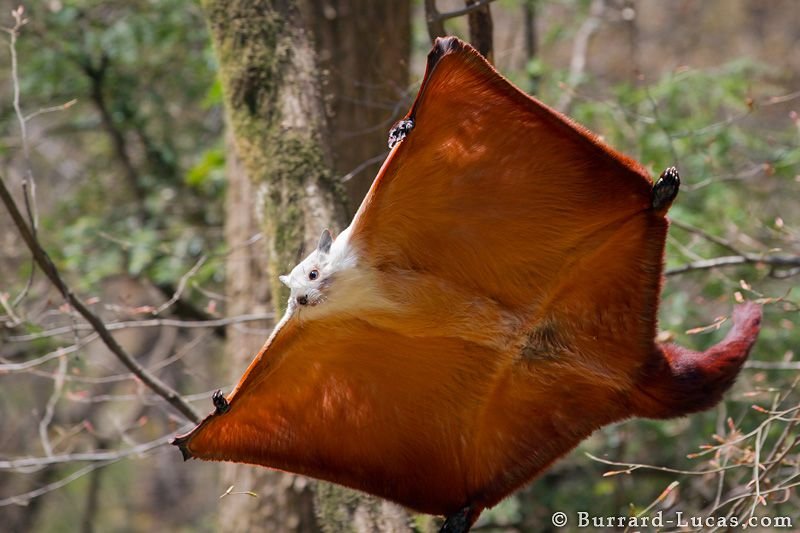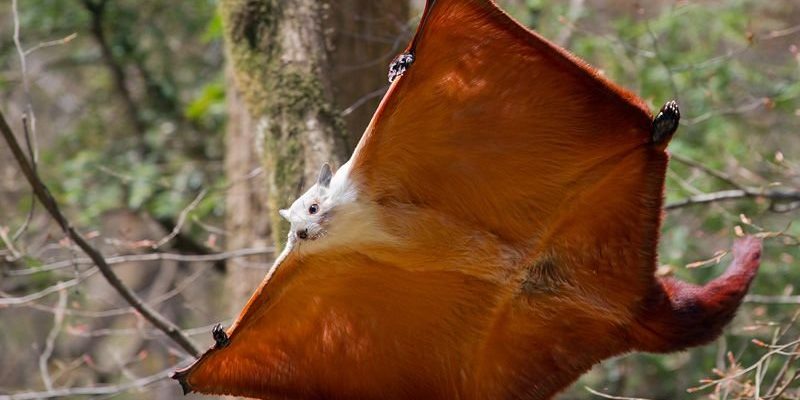
If you’ve got a curious mind and want to learn more about these incredible little creatures, you’re in the right place. Let’s unpack ten amazing facts about flying squirrels that will leave you appreciating these creatures even more.
1. They Don’t Actually Fly
Here’s the thing: despite their name, flying squirrels don’t really fly. Instead, they glide! They have a special membrane called the *patagium* that stretches from their wrists to their ankles, sort of like a big parachute. When they leap from a tree, they spread their limbs wide, and this membrane catches the air, allowing them to glide smoothly.
Think about it like this: it’s not quite the same as soaring through the sky like an eagle but more like a controlled slide down a zip line. They can glide for up to 150 feet! That’s about the length of a basketball court. This ability helps them escape predators and find food in the forest canopy, making them quite the resourceful little critters.
2. They Come in Different Species
Flying squirrels aren’t just one type; there are actually several species. The most common ones in North America are the *Southern Flying Squirrel* and the *Northern Flying Squirrel*. Southern flying squirrels are a bit smaller and more social than their northern counterparts.
These creatures can be found all across North America, from the eastern woodlands to the Pacific coast. If you’re lucky enough to spot one, you might notice they have a soft grayish-brown fur with white bellies. The differences in their coloration and size can be quite fascinating to observe. Each species has adapted uniquely to its environment, making them even more interesting.
3. Super Night Vision
You might be wondering how flying squirrels navigate and forage in the dark. Well, they have some of the best night vision in the animal kingdom! Their large, round eyes are perfect for seeing in low-light conditions. This helps them stay active at night, which is when they do most of their foraging.
Imagine walking in a dimly lit room and bumping into everything. That’s not an issue for flying squirrels—they can spot a tasty treat or a potential threat in almost complete darkness. This nocturnal lifestyle not only helps them avoid predators but also lets them take advantage of food sources when other animals are asleep.
4. Social Creatures
Flying squirrels are social animals. They often live in small groups, sharing nests and foraging areas. Their social behavior is quite charming! They communicate with each other using a variety of sounds, like chirps, barks, and whistles. It’s like having a little chat with friends while hanging out in their tree!
Their sociability doesn’t stop at communication; they also often share warmth and protection in their nests. These cozy homes are typically found in tree cavities or built from leaves. Just picture a group of these fluffy critters snuggled together on a chilly night, sharing warmth and stories.
5. Dietary Preferences
What do flying squirrels eat? You might guess nuts and berries, and you’d be right! Their diet mainly includes fruits, nuts, seeds, and even fungi. They have a sweet tooth, so they’re particularly fond of fruits like apples and berries.
Interestingly, flying squirrels play a key role in their ecosystem. When they eat fruits and nuts, they often bury some for later. But guess what? They sometimes forget where they buried them! This accidentally helps in planting new trees, making them important little gardeners of the forest.
6. Unique Nesting Habits
Flying squirrels are quite particular about their nesting habits. They prefer sites high up in trees, where they can create a cozy space out of leaves, moss, and fur. Some species will even use tree cavities left by woodpeckers. This helps them stay safe from predators and the elements.
You might find it interesting that they can share nesting spaces with other flying squirrels. It’s like a modern apartment-sharing situation but in the treetops! This communal living helps them keep warm during cold nights and provides safety in numbers against potential threats.
7. They Can Glide Long Distances
As mentioned earlier, flying squirrels can glide up to 150 feet, but did you know they can also adjust their glide path? When airborne, they can steer themselves to land safely on branches or even avoid obstacles in their way.
Imagine you’re catching a wave while surfing. You’d want to adjust your boards to ride it just right, right? Flying squirrels do something similar. They can change the angle of their bodies and even tuck their limbs to make their landings smooth. This incredible gliding ability not only showcases their agility but also keeps them safe from dangers below.
8. Endangered Species
While we marvel at the flying squirrel, it’s important to note that some species are facing challenges. The *Northern Flying Squirrel*, for example, is considered endangered due to habitat loss and fragmentation.
As trees are cut down for development and logging, these squirrels lose their homes and food sources. Conservation efforts are in place, but it’s vital to remember how our actions can impact these delicate creatures. Protecting their habitats helps ensure that future generations can enjoy the sight of flying squirrels gliding through the trees.
9. Their Role in Folklore
Flying squirrels have also found their way into folklore and stories. In many cultures, they symbolize agility, grace, and cleverness. Some Native American tribes have tales that feature flying squirrels, often using them to teach lessons about community and resourcefulness.
These stories remind us that animals are not just creatures we observe. They also hold meaning and connections to our own lives. The next time you hear a story about flying squirrels, think about how they’ve inspired people across generations.
10. Fun Fact: They Have a “Mating Dance”!
One of the quirkiest things about flying squirrels is their unique mating rituals. During the breeding season, males will perform a sort of “dance” to attract females. This can include vocalizations, leaps, and even gliding displays.
Imagine a playful dance-off in the treetops! The male’s goal is to show off his skills while also proving he’s fit and healthy. This fun fact highlights just how dynamic and interesting these little creatures can be, adding a layer of charm to their personalities.
In conclusion, flying squirrels are much more than just cute faces in the treetops. From their gliding skills to their social behaviors, they capture our imagination and remind us of the wonders of nature. By learning more about these fascinating creatures, we not only appreciate them more but also understand the importance of protecting their habitats and ensuring they thrive for years to come. So, next time you spot a flying squirrel, take a moment to enjoy its flight and marvel at its beauty!

